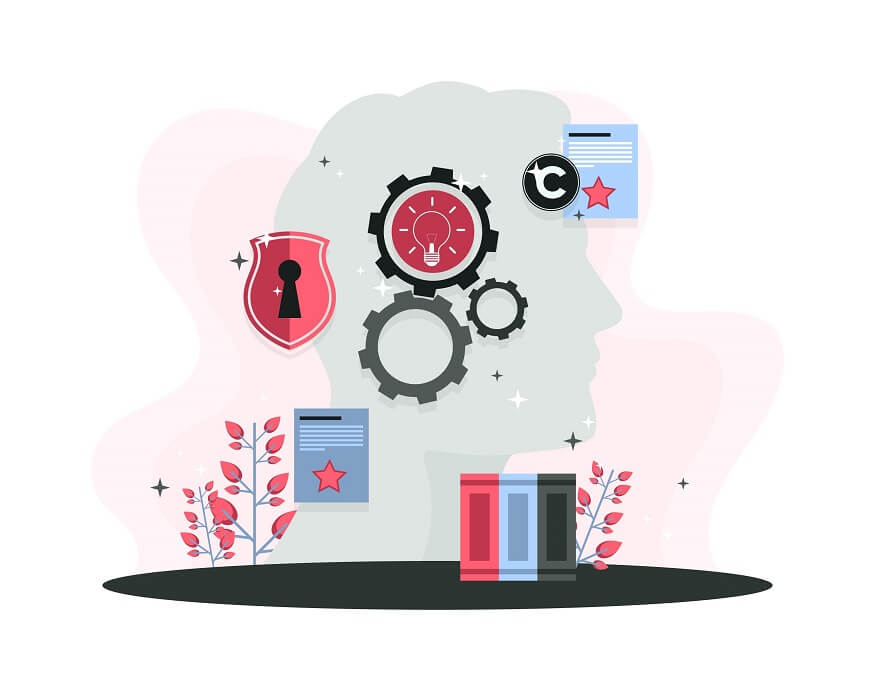Education is undergoing a model change in today’s rapidly changing digital environment as technology becomes an essential component of the educational process. One influential framework that guides educators in effectively integrating technology is Bloom’s Digital Taxonomy. Adapted from Benjamin Bloom’s original taxonomy, this digital version provides a roadmap for leveraging technology tools and resources to cultivate critical thinking, foster deep learning, and prepare students for success in the digital era.
We will explore the fundamental principles of Bloom’s Digital Taxonomy, examine each level in detail, and highlight the significance of technology in unleashing its full potential.
Level 1: Remembering and Understanding
At the foundational level of Bloom’s Digital Taxonomy activities, students acquire knowledge and comprehend concepts. Technology plays a pivotal role in facilitating this process by providing interactive and engaging resources that promote retention and understanding.
1. Interactive Presentations: Digital tools such as PowerPoint, Prezi, or Google Slides enable educators to create captivating presentations enriched with multimedia elements like images, videos, and interactive quizzes. These presentations stimulate active learning and aid in information retention.
2. Educational Videos and Online Tutorials: Platforms like Khan Academy, TED-Ed, and YouTube offer a vast array of educational videos and tutorials covering diverse subjects. Students can learn at their own pace, reinforcing their understanding of key concepts.
3. Digital Flashcards and Quizzes: Digital platforms like Quizlet and Kahoot provide students with the opportunity to review and test their knowledge through interactive flashcards and quizzes. Such tools transform learning into an enjoyable and interactive experience while facilitating information recall and comprehension.
Also Read: Ways Parents Can Support Their Children’s Online Learning
Level 2: Applying and Analysing
Moving beyond the foundational levels, examples of Bloom’s digital taxonomy emphasise the application and analysis of knowledge.
The use of technology enables students to apply their knowledge to actual circumstances.
1. Collaborative Tools: Collaborative platforms like Google Docs, Microsoft Teams, and Padlet facilitate group work and enable students to brainstorm ideas, share resources, and collectively solve problems. These tools foster teamwork skills and enhance critical thinking through collaborative discussions and projects.
2. Simulations and Virtual Reality: Virtual simulations and immersive experiences, available through platforms like Lobster and Nearpod VR, allow students to explore complex concepts and experiment with scenarios. Such tools provide interactive and engaging environments where students can analyse outcomes, fostering analytical and problem-solving skills.
3. Data Visualisation Tools: Websites and software like Tableau, Info gram, and Google Data Studio assist students in visualising and analysing data sets. By working with real-world data, students develop data literacy and enhance their analytical thinking abilities.
Also Read: Online Learning vs. Offline Learning: Which is Better?
Level 3: Evaluating and Creating
The upper levels of Bloom’s Digital Taxonomy activities involve evaluating and creating. Technology provides numerous opportunities for students to express their creativity, think critically, and develop essential 21st-century skills.
1. Online Debate Platforms: Websites like Kialo Edu and Flipgrid offer platforms for students to critically evaluate arguments, engage in structured debates, and develop their persuasive communication skills.
These platforms encourage critical thinking, logical reasoning, and effective communication.
2. Digital Portfolios: Tools like Seesaw and Google Sites enable students to create digital portfolios showcasing their work, reflecting on their learning progress, and receiving feedback from teachers and peers.
Digital portfolios promote self-assessment, encourage metacognitive skills, and facilitate the development of a growth mindset.
3. Digital Storytelling and Content Creation: Platforms such as Adobe Spark, Canva, and iMovie empower students to create multimedia-rich presentations, videos, and stories that demonstrate their understanding of concepts and engage their creativity. These tools enhance communication skills and encourage students to think innovatively.
Integration and Assessment
To effectively implement examples of digital Bloom’s taxonomy, educators must seamlessly integrate technology into their instructional strategies.
By aligning technology tools with specific examples of Bloom’s digital taxonomy, teachers can design activities and assignments that promote higher-order thinking and engagement.
1. Lesson Planning and Technology Integration: Educators can design lesson plans that incorporate technology tools and resources relevant to each level of the taxonomy, ensuring a comprehensive learning experience.
2. Assessment Strategies: Traditional assessment methods like quizzes and tests can be supplemented with online assessments, project-based evaluations, and peer feedback to measure students’ progress and evaluate the effectiveness of Bloom’s Digital Taxonomy integration.
Also Read: Computer Education: Meaning, Evolution, Importance, Benefits
Benefits and Challenges of Bloom’s Digital Taxonomy Implementation
Implementing Bloom’s Digital Taxonomy offers several benefits for both educators and students. Understanding these benefits and challenges is crucial for successful implementation.
Benefits of Integrating Bloom’s Digital Taxonomy:
• Enhanced student engagement and motivation
• Development of critical thinking and problem-solving skills
• Personalised and differentiated learning experiences
• Preparation for the digital-age workforce
Challenges and Solutions for Implementing Bloom’s Digital Taxonomy:
• Access to technology and digital resources
• Teacher training and professional development
• Ensuring equitable access for all students
• Addressing potential distractions and misuse of technology
Future Implications and Recommendations
As technology continues to evolve, the future implications of digital Bloom’s taxonomy in education are significant.
Educators and institutions can consider the following recommendations to maximise its potential:
Embrace emerging technologies: Embracing emerging technologies is a crucial aspect of modern education. By embracing emerging technologies, educators can stay at the forefront of innovation and provide students with engaging learning experiences. Interactive and immersive learning environments are made possible by the incorporation of cutting-edge technology like coding platforms, instructional applications, augmented reality, and virtual reality. By embracing emerging technologies, educators empower students to adapt to the rapidly evolving digital landscape and prepare them for the future.
Fostering a culture of innovation: Fostering a culture of innovation is at the core of our educational approach. We encourage innovation, experimentation, and risk-taking. In order to enrich a culture of creativity, we provide an environment where students are encouraged to think creatively, research unique ideas, and apply their knowledge in fresh ways. As a result, our students are able to acquire fundamental abilities that are crucial in the digital era.
Provide ongoing professional development: To support our educators in effectively integrating technology into their teaching practices, we provide ongoing professional development opportunities. We understand that teachers play a pivotal role in the successful implementation of digital Bloom’s taxonomy. Through regular training sessions, workshops, and collaborative learning communities, we equip our teachers with the knowledge, skills, and confidence to leverage technology effectively. This professional development focuses on understanding the principles of Bloom’s Digital Taxonomy, exploring relevant digital tools and resources, and designing engaging learning experiences that align with the taxonomy’s levels.
Also Read: What are the rules for Computer Laboratories in CBSE schools?
Conclusion
In conclusion, examples of Bloom’s digital taxonomy serve as a valuable framework for educators to effectively integrate technology and unleash its full potential in education. By incorporating technology tools aligned with each level of the taxonomy, educators can cultivate critical thinking, collaboration, creativity, and problem-solving abilities in students, preparing them for success in the digital age.
At Euroschool, we strongly believe in the transformative power of Bloom’s Digital Taxonomy in education. By integrating technology into our curriculum, we leverage this framework to enhance our students’ learning experiences. Our educators seamlessly integrate technology into lesson plans, ensuring that students engage with each level of the taxonomy. We recognise the benefits of this approach, including enhanced engagement and personalised learning experiences. At Euroschool, we are committed to preparing our students for the digital age by embracing examples of Bloom’s digital taxonomy and equipping them with the necessary skills to thrive in an increasingly technology-driven world.









